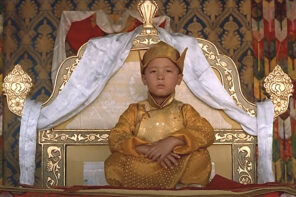In June 1981, when unusual cancers and pneumonias were identified in a small population of gay men in the United States, today’s “World AIDS Day” was unimaginable. More than twenty-six years have passed since the disease was first reported and twenty years have gone by since the founding of “World AIDS Day.” The illness that was both unknown and unnamed in 1981 has since been labeled “wrath of God” syndrome, gay-related immune deficiency syndrome, and, eventually, acquired immune deficiency syndrome.
Today, more than fifty percent of those with AIDS globally are women; and the syndrome is the leading cause of death among African American women between 25 and 34. Now, in 2008, nearly fifty percent of new U.S. diagnoses of HIV or AIDS occur among black people. And Hispanics, as well, are disproportionately affected by AIDS/HIV in the United States. Nearly 50 percent of US infections reported in March 2008 (data for 2006) were male to male infections. (For such data, see here and here.
The current global situation was unimaginable in 1981 and for many remains unimaginable, with some areas of the world experiencing infection rates of near apocalyptic proportions. Called by some the worst pandemic in 700 years, AIDS/HIV has come to be understood as both a health care crisis and a crisis in global human rights.
Indeed, 2009 brings us to the 20th anniversary of another less widely recognized event in the history of AIDS/HIV: the “Stop the Church” action of ACT-UP (AIDS Coalition to Unleash Power) which took place in and around Saint Patrick’s Church in New York City. In this controversial event (documented in the film, “Stop the Church”), a grassroots AIDS movement challenged the Catholic Church’s role in AIDS/HIV politics in the United States; in doing so, they challenged, as well, who “owned” the Church. As one organizer argues in the film (and here I paraphrase): “THEY are not the Church. We are the Church.” While a single example, this statement reminds us, today, on World AIDS Day 2008, that throughout its history, AIDS/HIV has been entangled with religion—for good and ill. As we move into the second quarter century of the pandemic, this entanglement continues. Twenty-first century religion has been shaped by and has shaped the AIDS/HIV crisis; they continue to shape one another.
Today, we often hear about this entanglement in positive ways. On the one hand, as the United Nations AIDS site reports, “Communities of faith play a very significant role in influencing people’s behaviour and attitudes, and in providing care and support for AIDS.” Partnerships between UNAIDS and what they call FBOs (faith-based organizations) include Muslims and Christians, Hindus and Jews, and many others. Today religious organizations work alongside secular organizations to provide support and work for social justice for women and men with HIV/AIDS. November 2007, for example, saw lengthy consultations on AIDS/HIV and Islam in South Africa sponsored by Islamic Relief International. The Sahgha Metta project brings Buddhist monks together to work on both prevention and care.
And President-elect Barack Obama said in a 2006 speech to the Global Summit on AIDS and the Church sponsored by evangelical Christian Rick Warren that “Corinthians says that we are all of one spirit, and that “if one part suffers, every part suffers with it.” But it also says, “if one part is honored, every part rejoices with it.” On this World AIDS day, it is the stories of overcoming, and not just illness, that the world needs to hear.”
World AIDS Day is rife with interreligious services; and religious organizations are active internationally in both prevention and care for people with AIDS/HIV. Voices such as Desmond Tutu have called for an end to homophobia, to discrimination against persons with AIDS/HIV, and indeed, for commitment to the global G8 promise to work toward eradicating both the disease and the social injustices which allow (and indeed may require) the uneven epidemiology of this now treatable and preventable disease.
And yet, religion is not now, and has not always been, the friend of everyone with AIDS/HIV. Religiously-based, often inflammatory, rhetoric inspired and continues to reinforce much of the stigma and discrimination experienced by people with HIV/AIDS across the decades; whether explicitly, or implicitly, religious organizations and individuals persist in homophobic attacks on gay men and lesbians and emphasize foreign-mission-based attention to HIV/AIDS while turning a blind eye to the pandemic’s ongoing significance as a form of social injustice in the United States.
These are an important part of sustaining the virulence of AIDS/HIV in people’s lives. While Fred Phelps of Westboro Baptist Church is certainly an extremist in claiming that “God Hates Fags,” he is not the only religious figure whose perspective on AIDS and related matters is diametrically opposed to the social justice orientation of the FBOs the UN has in mind as partners. In 2007, nearly two decades after the Stop the Church action, for example, headlines indicated “Pope skirts condoms issue in World AIDS Day Statement”— reminding readers of the ongoing entanglement of reproductive justice, AIDS/HIV prevention, and the Catholic Church—and who can forget Pope Benedict’s role in declaring homosexuality an “intrinsic disorder” earlier in his career as Cardinal Ratzinger?
Of course, the negative impact of religion is not limited to Christianity; AIDS education efforts clash with Islamic fundamentalism in Indonesia, the Dalai Lama is regularly accused (whether true or not) of anti-gay sentiment, and complex entanglements of complex entanglements of Hinduism with stigma have also been debated.
So: this year’s World AIDS Day theme: “Stop AIDS: Keep the Promise “ calls us, whether ourselves religious or secular, to refuse the role of religion in perpetuating hatred and inhumanity, to focus on a role for religion in social justice for all, and to share in the work of world transformation aiming for a world in which World AIDS Day is no more.
Some say setting aside a day to remember and mourn the millions who have died and the millions with AIDS/HIV is itself sacralizing—let us hope that it is sacralizing hope, sacralizing justice, sacralizing change.




